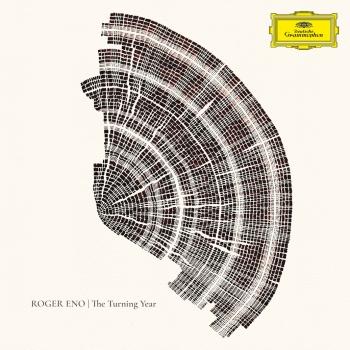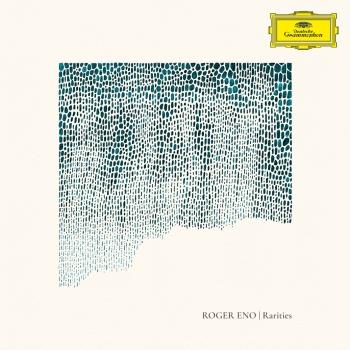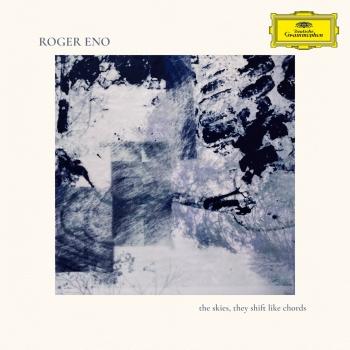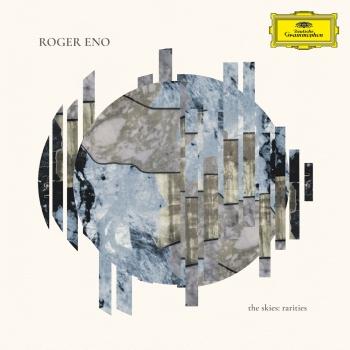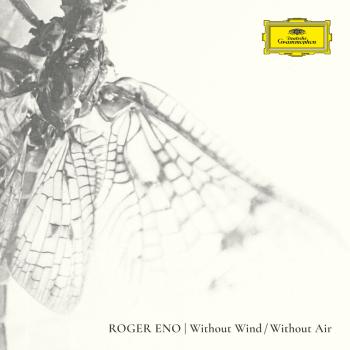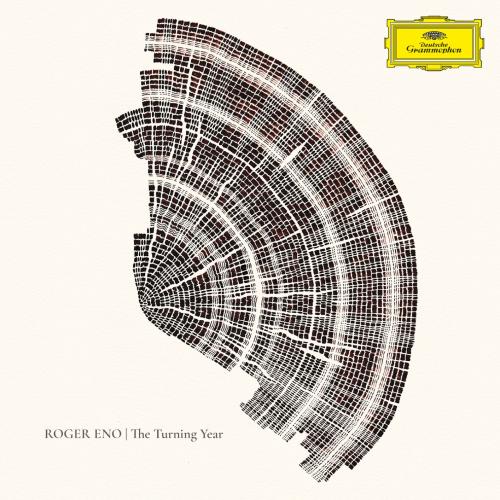
The Turning Year Roger Eno
Album Info
Album Veröffentlichung:
2022
HRA-Veröffentlichung:
22.04.2022
Label: Deutsche Grammophon (DG)
Genre: Classical
Subgenre: Classical Crossover
Interpret: Roger Eno
Komponist: Roger Eno (1959)
Das Album enthält Albumcover Booklet (PDF)
Entschuldigen Sie bitte!
Sehr geehrter HIGHRESAUDIO Besucher,
leider kann das Album zurzeit aufgrund von Länder- und Lizenzbeschränkungen nicht gekauft werden oder uns liegt der offizielle Veröffentlichungstermin für Ihr Land noch nicht vor. Wir aktualisieren unsere Veröffentlichungstermine ein- bis zweimal die Woche. Bitte schauen Sie ab und zu mal wieder rein.
Wir empfehlen Ihnen das Album auf Ihre Merkliste zu setzen.
Wir bedanken uns für Ihr Verständnis und Ihre Geduld.
Ihr, HIGHRESAUDIO
- 1 A Place We Once Walked 06:05
- 2 Slow Motion 01:54
- 3 Introit 00:10
- 4 Hymn 03:03
- 5 Clearly 02:31
- 6 The Turning Year 02:42
- 7 Bells 03:23
- 8 Hope (The Kindness of Strangers) 04:59
- 9 On the Horizon 03:53
- 10 Innocence 03:10
- 11 Something Made Out Of Nothing 04:23
- 12 An Intimate Distance 04:20
- 13 Stars and Wheels 04:53
- 14 Low Cloud, Dark Skies 05:32
Info zu The Turning Year
Roger Eno ist ein britischer Komponist und Musiker, dessen unverwechselbarer Stil als Aufnahmekünstler Kultstatus erlangt hat. Letztes Jahr gab er sein Debüt bei der Deutschen Grammophon mit Mixing Colours, seinem ersten Duo-Album mit seinem Bruder Brian Eno, das mit großem Erfolg veröffentlicht wurde. Nun erscheint Rogers neuestes Solo-Album, The Turning Year.
The Turning Year erlaubt es dem Hörer, durch Roger Enos Spiegel zu blicken, gefüllt mit Einblicken in pastorale Szenen und frei fließenden, berührenden Kompositionen. Die Stücke werden von Eno als Pianist exquisit umgesetzt, und bei einigen Titeln wird er von dem gefeierten deutschen Streicherensemble Scoring Berlin unterstützt. Mit einer Mischung aus neueren Kompositionen und Live-Favoriten aus Enos Konzertrepertoire bietet das Album eine umfassende Präsentation des Solowerks des Komponisten.
"The Turning Year ist wie eine Sammlung von Kurzgeschichten oder Fotografien einzelner Szenen, von denen jede ihren eigenen Charakter hat, aber irgendwie eng mit den anderen zusammenhängt", erklärt Eno. "Beim Anhören musste ich darüber nachdenken, wie wir unser Leben in Facetten leben, wie wir flüchtige Blicke erhaschen, wie wir durch unser Leben gehen, wie wir die Jahreswende wahrnehmen."
Roger Eno, Klavier, Synthesizer, Keyboards
Scoring Berlin
Roger Eno
grew up in the idyllic setting of Woodbridge, Suffolk, with an East Anglian postman father and a Flemish mother, who gave he and his younger sister “one room of the house, which was devoted to whatever we children wanted to do. We could write on the walls, there was a sandpit, there was a busted-up piano we could knock seven bells out of. The town had a lovely river, so there was swimming, great places to cycle, and it was perfectly acceptable for a child to leave in the morning and not turn up till tea time.” It’s therefore little surprise he continues to live in the same locale, spending spare time wandering the countryside on foot or by bike. “What keeps me in a not entirely enlightened country is my continuing love of the area in which I live”.
Like its bucolic, tranquil qualities, a timeless character is key to the magic of Roger’s music. That’s as true of 1983’s Apollo: Atmospheres And Soundtracks – which, composed with his brother, Brian Eno, and producer Daniel Lanois, launched his recording career – as it is of The Turning Year, his debut solo album for Deutsche Grammophon, due on April 22nd, 2022. Recorded during summer, 2021, largely at Berlin’s legendary Teldex Studio and in part at the studio of producer Christian Badzura (also the label’s Director of New Repertoire), it’s an album of grace, purity, melancholy and solace which showcases his free-flowing inspiration and deeply affecting compositions. It’s also given him a chance to remind us of his talents as an arranger, with its compelling piano melodies elevated on some tracks by Scoring Berlin’s 20-piece string ensemble, and clarinettist Tibor Reman, who adds enchantment to the elegiac ‘On The Horizon’.
From the hypnotic calm of the opening ‘A Place We Once Walked’ to the closing ‘Low Cloud Dark Skies’, whose rippling arpeggios are lent gravity by the string section’s sustained chords, The Turning Year uses so-called classical orchestration, so it’s rooted in a tradition. But it’s a tradition that’s taken further rather than abandoned - for example a great deal of thought was put into the running order of the recording, allowing each piece to become a short story in a volume. These ‘stories’ were compiled from pieces written both very recently and longer ago, and manifest themselves in the likes of ‘Slow Motion’, a piece for strings whose unhurried pace provides a gentle passage towards the devotional ‘Hymn’, and ‘Intimate Distance’, whose solitary piano projects a quiet sense of yearning. The frugal simplicity, too, of the emotionally eloquent ‘Clearly’ and intimate ‘Bells’ are counterbalanced by the slow-burning elegance of ‘Hope’, whose ghostly silences are met with moments of unblushing, touching sentimentality, while the understated optimism of ‘On The Horizon’ evokes the still minutes after a storm. The brittle beauty of ‘Something Made Out Of Nothing’, meanwhile, refers with its title to “how 'a thing' can be made of all but nothing, like the movement of reeds caused by the weakest of breezes,” but its title could also encapsulate Roger’s improvisational techniques, illuminating The Turning Year’s singular mix of formality and informality. “I'm not a fan of 'the precious',” he agrees, “and don't like the idea of exclusive clubs.”
This is evident in how this composer has always worked. Roger began his studies at music school aged 16, before moving a year later to Colchester. His public career began after he was inspired by the pioneering proto-minimalist composer Erik Satie to stretch his methodology to its logical conclusion. “I came up with this 90-minute tape where virtually nothing happened whatsoever,” he recalls, and on its strengths his brother invited Roger to join him and Lanois in Canada to record Apollo..., the highly acclaimed score to For All Mankind, Al Reinert’s documentary about the Apollo moon landing. The following year EG Records released Roger’s first solo album, Voices, a piano record which nonetheless owed a similar debt to both Satie’s influence and Brian’s production, while 1988’s Between Tides saw him step away from such electronic embellishments, exploiting both his love for baroque music and his arranging skills to write something more akin to chamber music.
For 1992’s The Familiar, Roger teamed up with Kate St John – then best known with The Dream Academy – to mix pop, classical, ambient, folk, minimalism and more for a vocal record which defied genres, and on 1994’s Lost In Translation and 1996’s Swimming he expanded his horizons further, singing for the first time and adding new instruments to his armoury. (The latter, for example, opens with ‘The Paddington Frisk’, performed on accordion and named after an 18th century term for the disquieting dance of the hanged.) Over the next two decades, more solo albums followed, most recently 2018’s Dust of Stars, which, produced by Youth, returned him to the style of Voices.
Amid all this, he scored Trevor Nunn’s acclaimed 1998 production of Harold Pinter’s Betrayal at London's National Theatre, and he recently finished work on his second series of Nick Hornby’s celebrated State of the Union, directed by Stephen Frears. He and his brother also continued collaborating on film music, contributing to David Lynch’s Dune (1984), Adrian Lyne’s 9 ½ Weeks (1986), Dario Argento’s Opera (1987) and Danny Boyle’s Trainspotting (1996) while their score for Boyle’s BBC mini-series Mr. Wroe’s Virgins (1993) wasnominated for a BAFTA. In addition, Roger’s joined the likes of Lol Hammond, Peter Hammill, No-Man (co-founded by Steven Wilson) and Italian ensemble Harmonia, as well as his first ‘band’, Channel Light Vessel, formed with Laaraji, Bill Nelson, Kate St John and Japanese cellist Mayumi Tachibana. He’s also teamed up as a session musician and band member with artists as diverse as The Orb, Lou Reed, Jarvis Cocker and Beck, and that’s not to mention his three-year stint as Musical Director for Tim Robbins and his band, The Rogues Gallery. Furthermore, he’s hosted events as an accompanist, performing improvised music to well-known early 20th century silent films and archive home footage, obtained and licensed from the British Film Institute, and he’s a member, too, of the Spiritual Humanist Church, which recognises humanity’s need for rites and rituals, even among those of a non-orthodox leaning, and for whom he’s officiated over multiple “non-religious but sensitive services”.
The Turning Year follows 2020’s Mixing Colours, his first full-length album recorded exclusively with his brother and compiled from pieces Roger had shared for over 15 years with Brian, who worked on them further with his own renowned digital enhancements. It was released in the same month that the Covid pandemic forced global lockdowns, when it swiftly became a staple of people’s newly muffled lives.
Listening to Roger’s impressive discography, it’s clear he’s always been prescient, and one year after Mixing Colours, he and Brian joined one another for the first time on stage bolstered by Roger’s daughter Cecily and Brian’s regular collaborators, Leo Abrahams and Peter Chilvers. In the extraordinary surroundings of Athens’ Acropolis, they performed material new and old from across their mutual catalogues, and the packed, enthralled crowd was yet another sign that the world is at last catching up with their innovative, inventive aesthetic. Now, with The Turning Year, there’s no escaping the fact that, though he’s never sought it, Roger Eno is in the spotlight.
Booklet für The Turning Year










